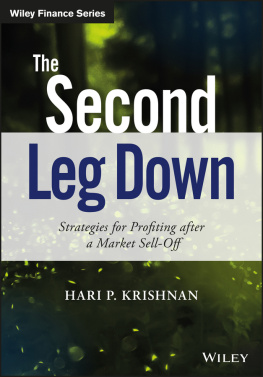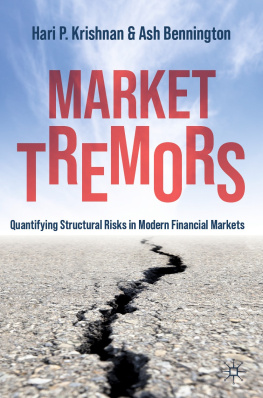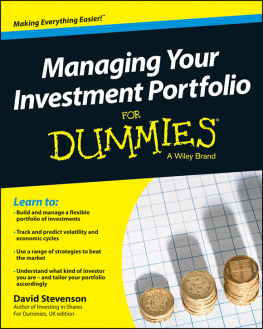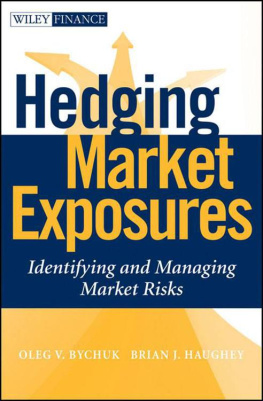
This edition first published 2017
2017 John Wiley & Sons, Ltd.
Registered office
John Wiley & Sons Ltd, The Atrium, Southern Gate, Chichester, West Sussex, PO19 8SQ, United Kingdom.
For details of our global editorial offices, for customer services and for information about how to apply for permission to reuse the copyright material in this book please see our website at www.wiley.com.
All rights reserved. No part of this publication may be reproduced, stored in a retrieval system, or transmitted, in any form or by any means, electronic, mechanical, photocopying, recording or otherwise, except as permitted by the UK Copyright, Designs and Patents Act 1988, without the prior permission of the publisher.
Wiley publishes in a variety of print and electronic formats and by print-on-demand. Some material included with standard print versions of this book may not be included in e-books or in print-on-demand. If this book refers to media such as a CD or DVD that is not included in the version you purchased, you may download this material at http://booksupport.wiley.com. For more information about Wiley products, visit www.wiley.com.
Designations used by companies to distinguish their products are often claimed as trademarks. All brand names and product names used in this book are trade names, service marks, trademarks or registered trademarks of their respective owners. The publisher is not associated with any product or vendor mentioned in this book.
Limit of Liability/Disclaimer of Warranty: While the publisher and author have used their best efforts in preparing this book, they make no representations or warranties with respect to the accuracy or completeness of the contents of this book and specifically disclaim any implied warranties of merchantability or fitness for a particular purpose. It is sold on the understanding that the publisher is not engaged in rendering professional services and neither the publisher nor the author shall be liable for damages arising herefrom. If professional advice or other expert assistance is required, the services of a competent professional should be sought.
Library of Congress Cataloging-in-Publication Data is available:
ISBN 9781119219088 (hardback) ISBN 9781119219019 (ePDF)
ISBN 9781119219002 (ePub) ISBN 9781119219064 (o-bk)
Cover Design: Wiley
Cover Image: HTU/Shutterstock
Set in 9/11 and SabonLTStd by SPi Global, Chennai, India.
The Wiley Finance series contains books written specifically for finance and investment professionals as well as sophisticated individual investors and their financial advisors. Book topics range from portfolio management to e-commerce, risk management, financial engineering, valuation and financial instrument analysis, as well as much more. For a list of available titles, visit our Web site at www.WileyFinance.com.
Founded in 1807, John Wiley & Sons is the oldest independent publishing company in the United States. With offices in North America, Europe, Australia and Asia, Wiley is globally committed to developing and marketing print and electronic products and services for our customers' professional and personal knowledge and understanding.
To Sudarshan and Kailash
Preface
There have been times when I have looked into the abyss as a portfolio manager, yet found a way to avoid disastrous losses. My trading accounts have weathered the 2008 crisis, the 2010 Flash Crash, the European Crisis of 2011 and the volatility spike from nowhere in August 2015, with varying degrees of success. Things have not always gone as well as I had hoped, yet I have always come away with a collection of new tactics for survival. For a fund manager, it is about survival after all. Aside from the money, your reward for decent performance is another year of money management. You don't want to take the path of boxers, who only decide to retire after a series of devastating knockouts. It is nice not to have to go out on your shield. This book has been inspired by the various crises I have faced as a money manager and the techniques I have learned and devised for managing through them. As every crisis is somewhat different, finding the most efficient hedge is a never-ending quest. I do hope that readers will find something that they can use to avert catastrophic losses.
The style of this book is casual and conversational, yet it attempts to be as accurate and realistic as possible. I have been asked who the ideal reader of this book might be. The best answer I can give is me, 20 years ago. This is a more pedestrian effort than Rilke's Letters to a Young Poet. Still, if I had followed the roadmap laid out in the pages that follow, I would have avoided numerous mistakes over the course of my career. More pragmatically, the book is targeted at a wide range of potential readers. Pension fund managers might find value in the discussion of duration hedging, bespoke trend following and roll down as a source of return for bond portfolios. The introductory options sections are designed to give a buy-side perspective on a topic that is usually discussed in terms of arbitrage, precise replication and stochastic calculus. I try to address why someone might want to use particular options structures. I also highlight specific structures that portfolio managers actually use and what might predicate a certain trade.
It is common for portfolio managers to hide their best ideas. In some cases, they might even publish strategies that didn't quite work, for implementation reasons. This leads to a situation where people who don't have any money management experience write extensive books about investing, while those who have the most to contribute are relatively silent. How is it possible to provide some valuable content without giving too much away? In this book, I have tried to veer from the norm. By focusing on hedging, rather than alpha generation, I have been able to go into some detail about specific strategies, without pretending to offer a cook book for making money. These have actually been battle-tested in the markets, for institutional clients.
Acknowledgements
The following people have had a profound effect on the contents of this book. I would like to thank them directly.
My wife Lalitha (using her considerable literary talents) edited large sections of the book and improved the flow of the writing.
Diego von Buch provided the initial impetus for the book, calling me from his French chateau and offering a hedging mandate just as market conditions were deteriorating in 2007.
Jerry Haworth deserves a great deal of credit for introducing me to the subtleties of long-dated options and his imprint can be found in .
Marc Malek exerted a large influence on the regime index and trend following sections.
Roy Niederhoffer also played an important role, as a source of original ideas about trend following strategies.
Michael Howell's insights into the relationship between funding liquidity and the market cycle were the inspiration for . I can only hope that I have not watered down his ideas to the point where they are unrecognisable.
Pablo Carbajal also deserves special thanks, as he has been the sounding board for many of the ideas presented in this book.
I hashed out many of the ideas in this book with Lee Collins, who encouraged me to put things in simple and concrete terms. His way of talking about trades had a large impact on .
Alex Manzara and Aaron Brown were kind enough to read the entire manuscript, providing valuable perspective on options execution in extreme market conditions.
My mother and father-in-law supported me by selflessly taking care of the boys and freeing up time for me to slog through the manuscript.
Next page







